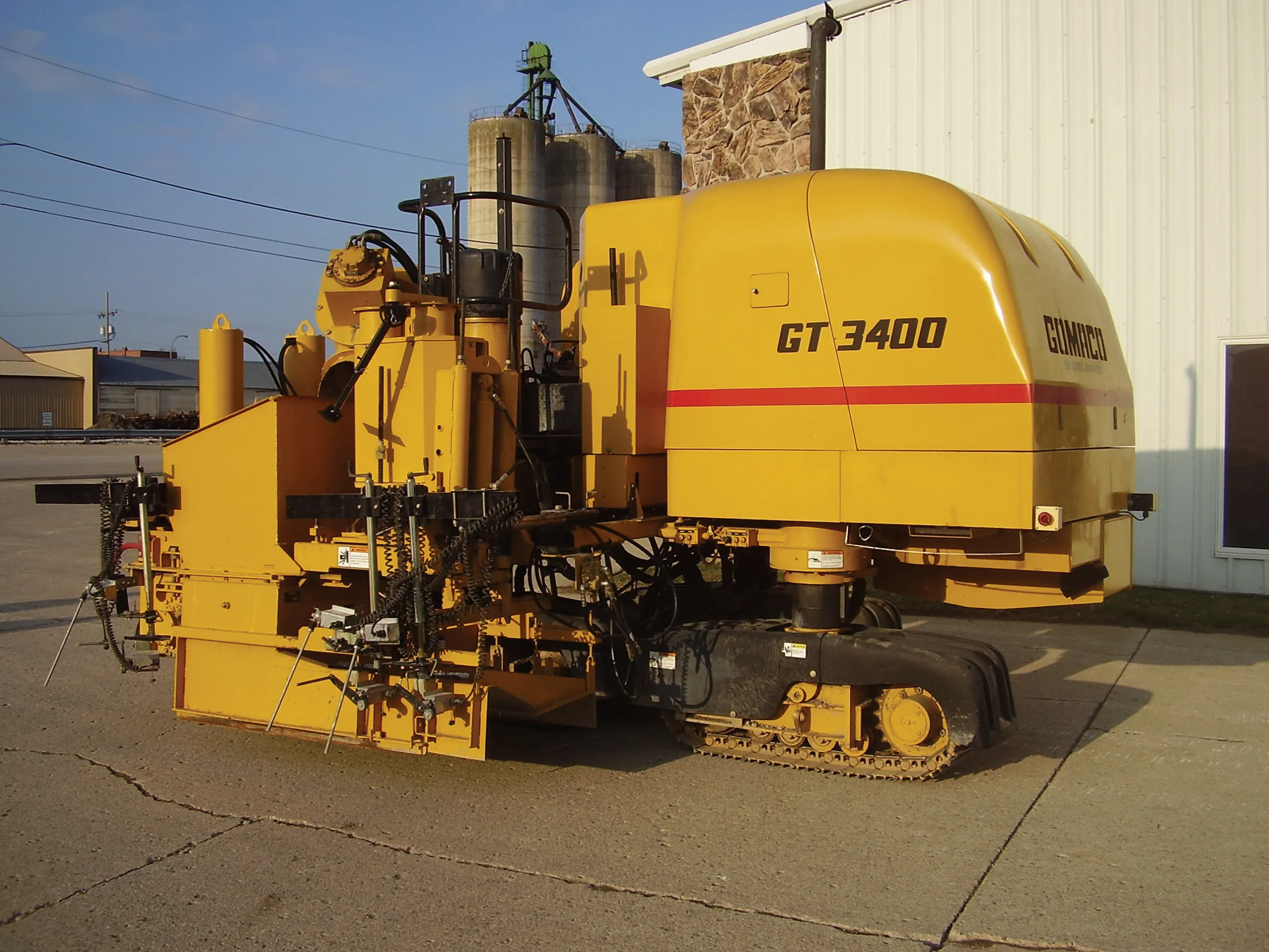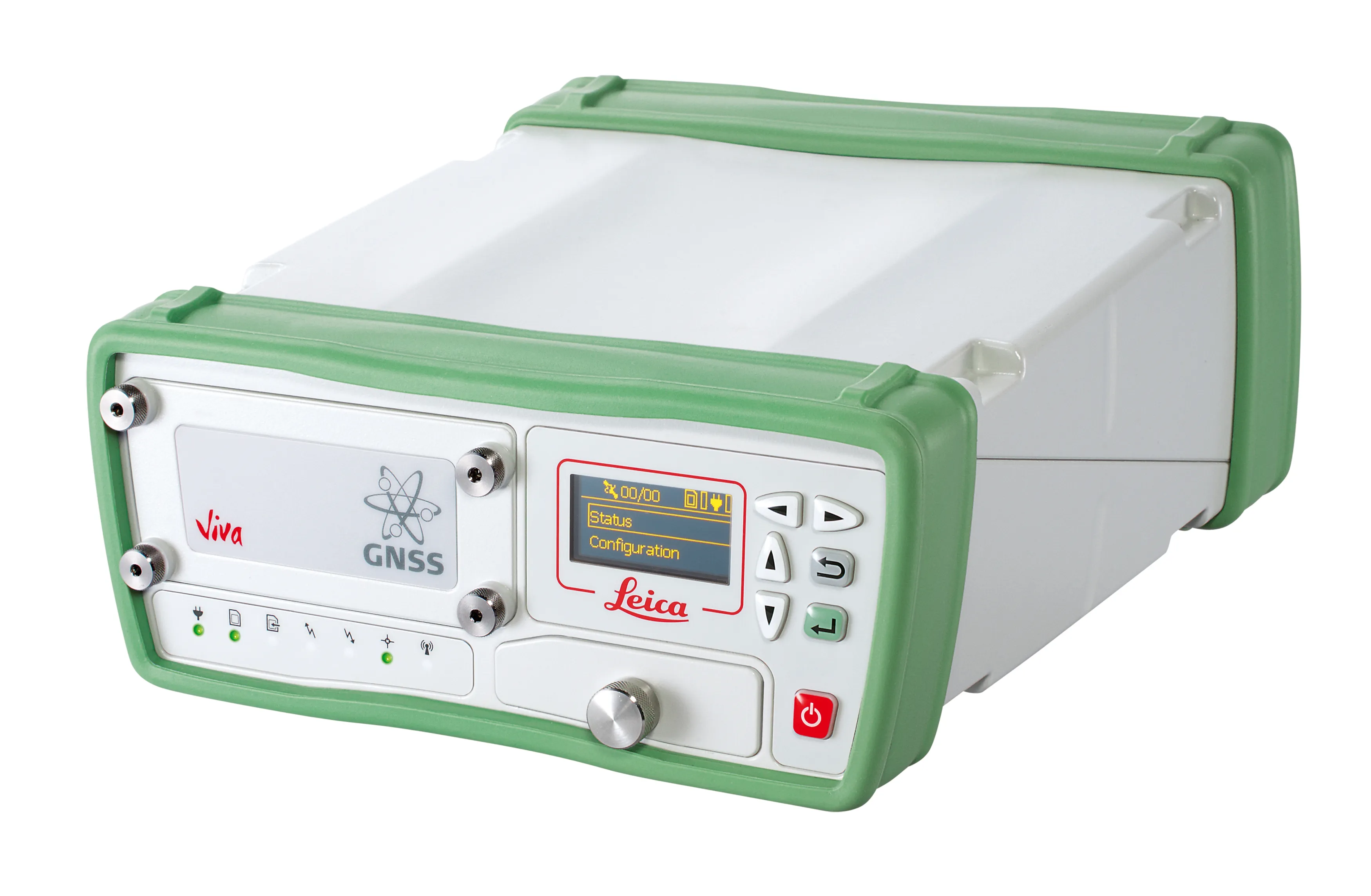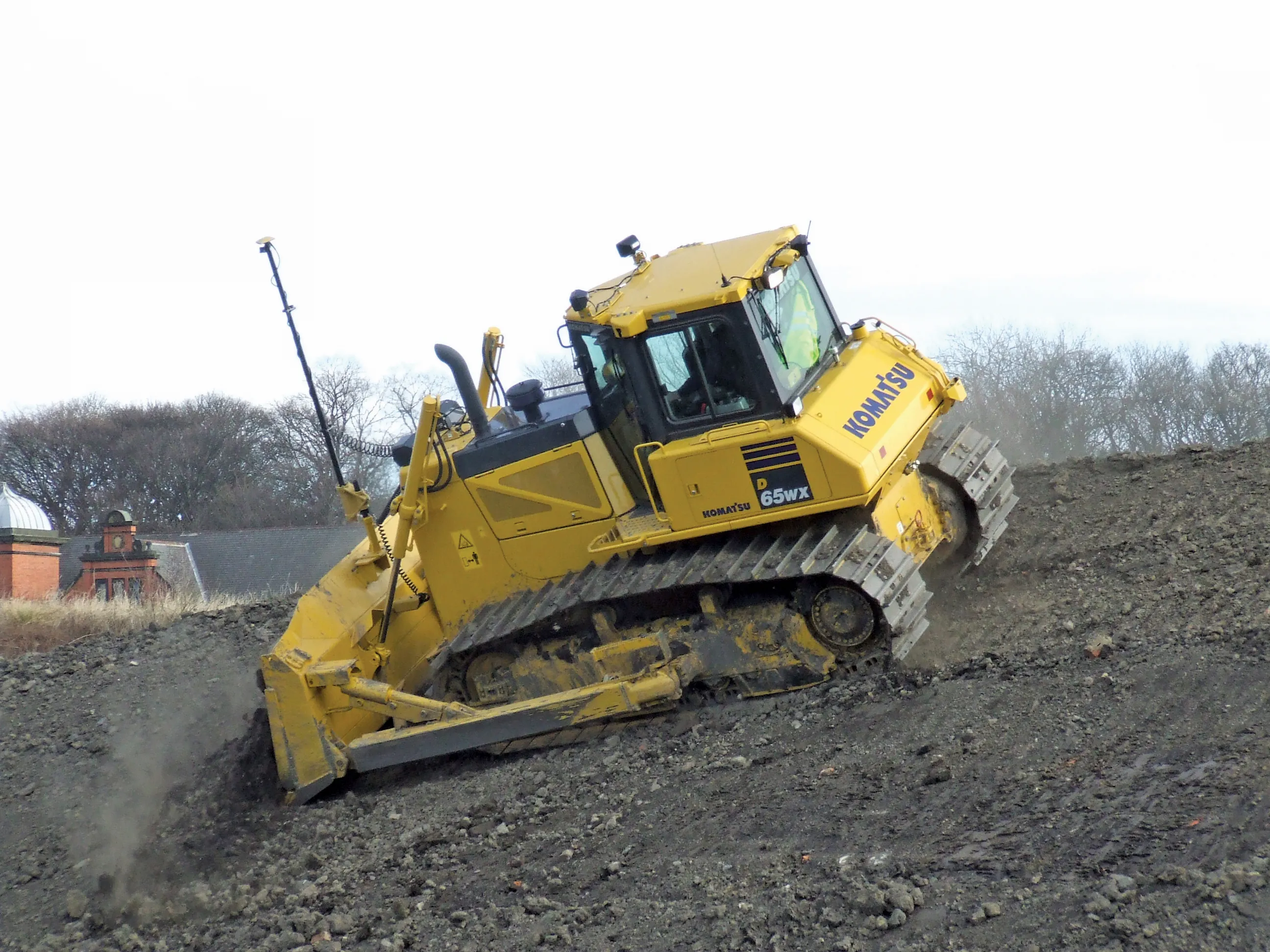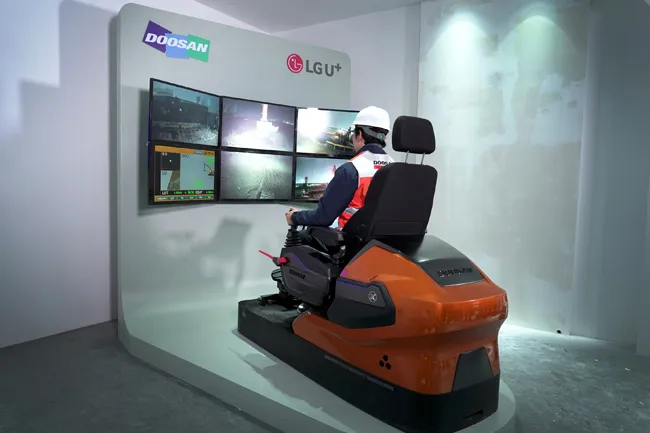Slipform paver manufacturers are currently seeing strong business gains, Mike Woof reports
The concrete slipforming sector is seeing strong business gains at present, with high demand for machines right around the globe. In Europe and the US, barrier machines are in particular demand, while in Russia airport paving is top of the agenda. All over the world, airports have to be rebuilt to cope with new large aircraft, and machines are busy operating in Asia, Europe and both North and South America on this
March 20, 2012
Read time: 5 mins

RSS
A key feature of218 Gomaco's new GT-3400 kerb and gutter paver is the new generation wireless remote control unit. The user can change the sensitivity of the operation, so that that machine responds to the controls differently. For moving the machine around from one area to another or loading and unloading from a transport vehicle, fast response times are needed. Track position is indicated on-screen so that the operator can see how the machine is steering for instance. For actual paving work, much finer controls can be used to allow precise operation. A Canadian firm makes the wireless remote unit to GOMACO's specification and this unit operates at a frequency of 2.4GHz and uses the latest spread spectrum, frequency hopping technology, minimising the risk of interference. Scott Pedersen is GOMACO's R&D senior designer and said, "Every two milliseconds this changes the frequency." Dual language capabilities are offered as standard and Pedersen added, "Spanish, German and French are available now and we will add Russian, Japanese and Chinese. Anything they want they can have." The GT-3400 features a dual CANbus network and Pedersen said, "It allows us to have the machine automation on one CANbus network and engine information on another." This means that the automation functions are not slowed by the data being handled by the machine information system according to Pedersen and he explained, "...which is the beauty of the twin CANbus system." The capabilities of this system are still being explored and Pedersen thinks GOMACO may be able to offer more features in the future. "We're still tapping into it," he said.
The265 Leica Geosystems computer plugs straight into the GT-3400's automation network and Pedersen said, "We have Leica Geosystems software ready to go."
The system sends the machine movement controls through sensor inputs and Pedersen explained, "We can see those voltages through a different display. It runs the machine through virtual sensors." However, GOMACO works with342 Topcon and 2122 Trimble as well and Pederson said that a system will be available from one or both of these companies in the future.
Dennis Clausen is in charge of training at GOMACO and said that the new paving automation technology from Leica Geosystems combines technological sophistication with ease of use. He said, "It's more operator friendly than the previous system and it's not just for surveyors like before." GOMACO started working with Leica Geosystems around 10 years ago but can also install equipment from Topcon and Trimble on its pavers and acknowledges that some contractors prefer systems from these companies. The quality of work carried out using the controls is far higher and the systems offer other benefits too. Clausen added, "There are no stringlines and no trip hazards." The new system from Leica Geosystems was first used by a contractor in Alabama and this system is able to work with twin total station receivers or with a total station receiver and a GPS receiver. PaveSmart automatically regulates all points of the mold relative to the 3D design and offsets can be adjusted on the fly. The satellite positioning technology uses both the American GPS and Russian Glonass systems for greater accuracy. He said, "It takes a minimum of three satellites in contact with the machine at all times but the more satellites the better. You can set up safeguards so that if the machine loses satellite contact it will stop the paver automatically." Clausen commented, "We find a better solution with two total stations rather than a single total station and GPS." However, using a GPS receiver on the front of the machine and the total station on the rear is particularly well-suited to tight radius applications, according to Clausen.
He said that there are other benefits from combining GPS and TPS technology too, "With TPS you need to be within 200m of the total station but with GPS you can be up to 20km away from the reference station." And he explained that this means the same reference station can be used for two or more jobs at two or more different sites. The hardware can be moved from the paver to an excavator, dozer or grader, making it more versatile than previous systems, while the Leica Geosystems computer also works with widely available software from suppliers such as685 Autodesk, 4019 Bentley Systems or 357 Novapoint
RSS
Slipform paver manufacturers are currently seeing strong business gains, Mike Woof reports
The concrete slipforming sector is seeing strong business gains at present, with high demand for machines right around the globe. In Europe and the US, barrier machines are in particular demand, while in Russia airport paving is top of the agenda. All over the world, airports have to be rebuilt to cope with new large aircraft, and machines are busy operating in Asia, Europe and both North and South America on this type of work. The rivalry between the various manufacturers is intense in this relatively niche equipment sector and this has produced an array of new models in recent months.A key feature of
The
The system sends the machine movement controls through sensor inputs and Pedersen explained, "We can see those voltages through a different display. It runs the machine through virtual sensors." However, GOMACO works with
Dennis Clausen is in charge of training at GOMACO and said that the new paving automation technology from Leica Geosystems combines technological sophistication with ease of use. He said, "It's more operator friendly than the previous system and it's not just for surveyors like before." GOMACO started working with Leica Geosystems around 10 years ago but can also install equipment from Topcon and Trimble on its pavers and acknowledges that some contractors prefer systems from these companies. The quality of work carried out using the controls is far higher and the systems offer other benefits too. Clausen added, "There are no stringlines and no trip hazards." The new system from Leica Geosystems was first used by a contractor in Alabama and this system is able to work with twin total station receivers or with a total station receiver and a GPS receiver. PaveSmart automatically regulates all points of the mold relative to the 3D design and offsets can be adjusted on the fly. The satellite positioning technology uses both the American GPS and Russian Glonass systems for greater accuracy. He said, "It takes a minimum of three satellites in contact with the machine at all times but the more satellites the better. You can set up safeguards so that if the machine loses satellite contact it will stop the paver automatically." Clausen commented, "We find a better solution with two total stations rather than a single total station and GPS." However, using a GPS receiver on the front of the machine and the total station on the rear is particularly well-suited to tight radius applications, according to Clausen.
He said that there are other benefits from combining GPS and TPS technology too, "With TPS you need to be within 200m of the total station but with GPS you can be up to 20km away from the reference station." And he explained that this means the same reference station can be used for two or more jobs at two or more different sites. The hardware can be moved from the paver to an excavator, dozer or grader, making it more versatile than previous systems, while the Leica Geosystems computer also works with widely available software from suppliers such as
RSS









